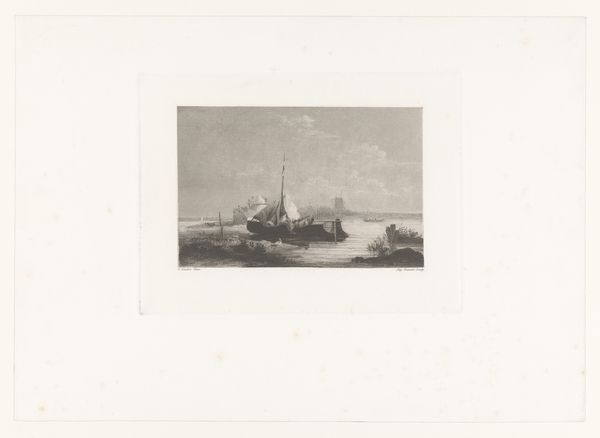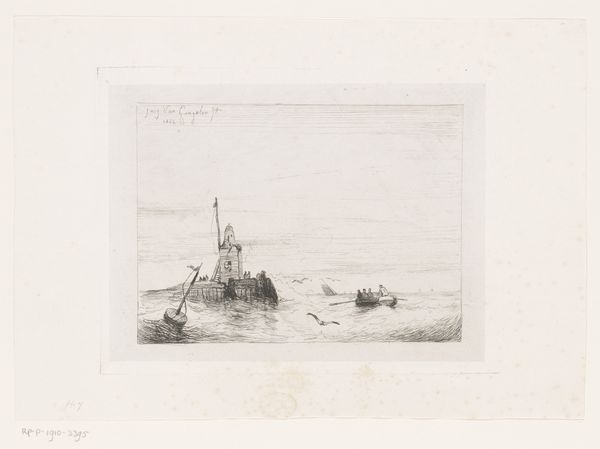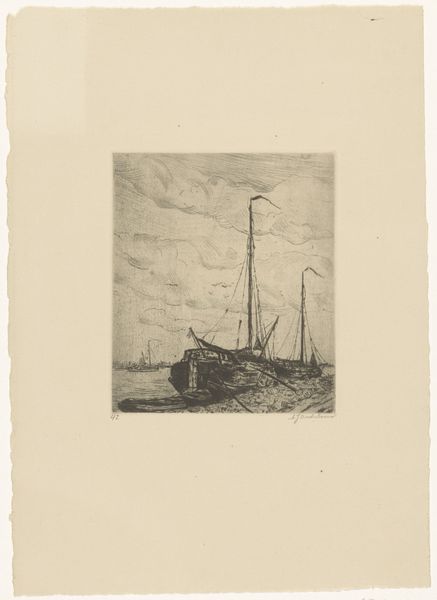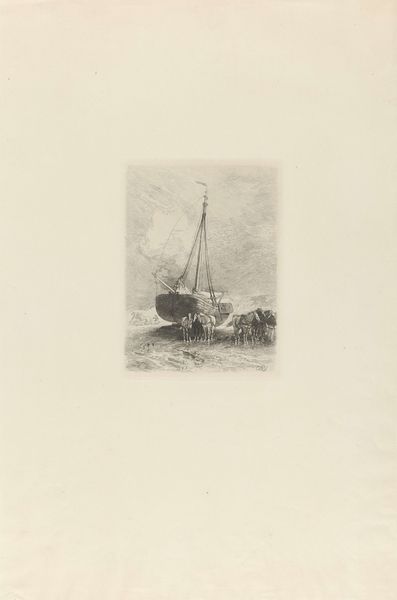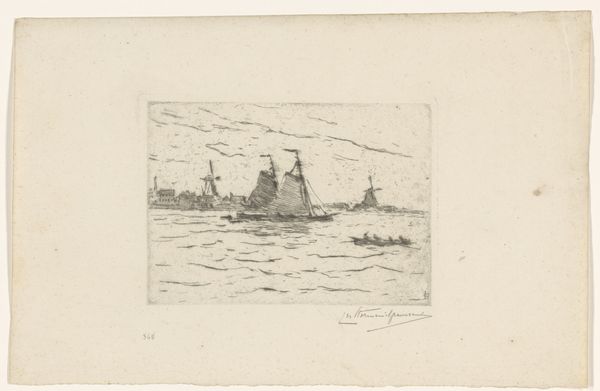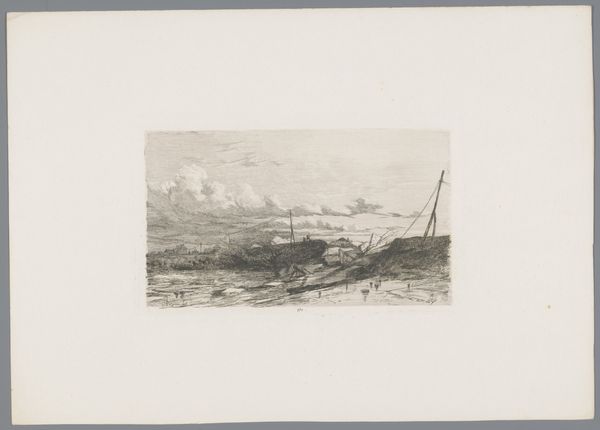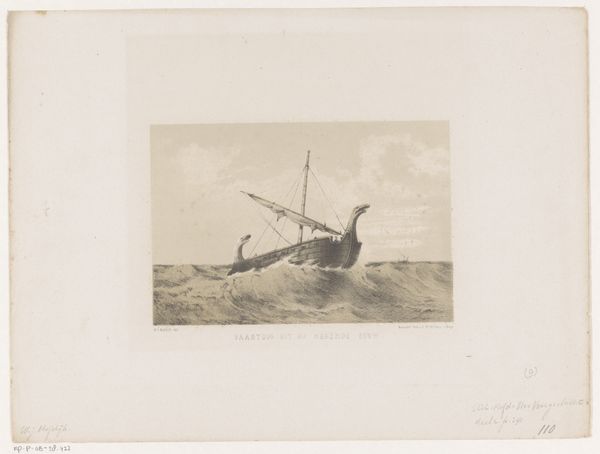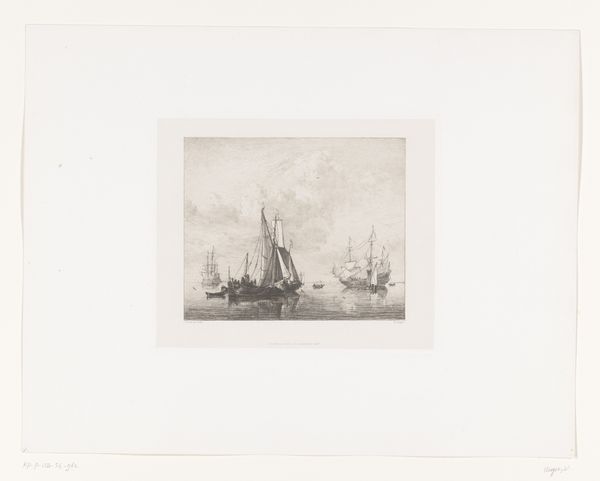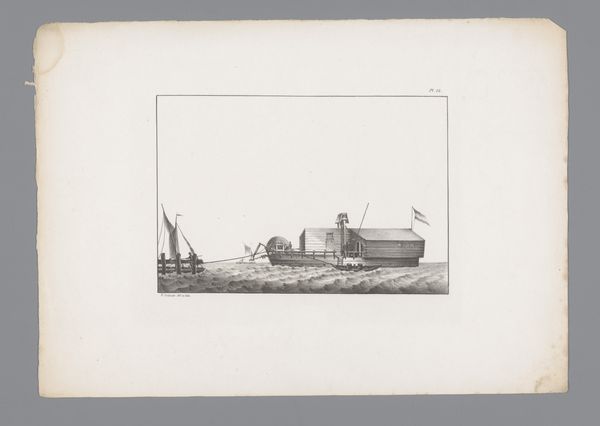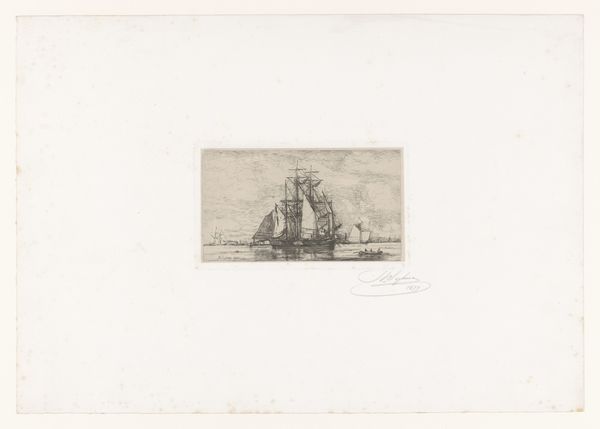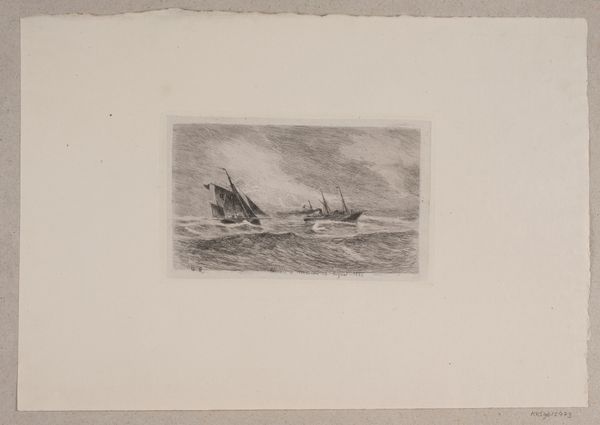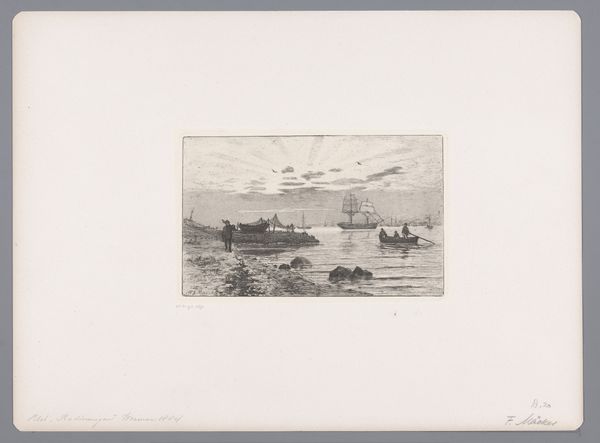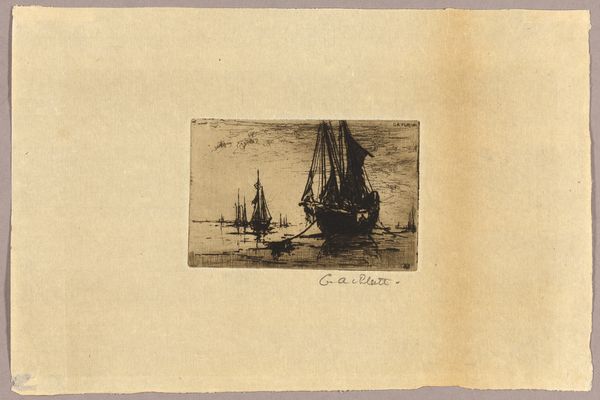
#
photo of handprinted image
#
light pencil work
#
pale palette
#
pale colours
#
ship
#
light coloured
#
white palette
#
watercolour illustration
#
tonal art
#
remaining negative space
#
watercolor
Dimensions: height 210 mm, width 257 mm
Copyright: Rijks Museum: Open Domain
Curator: I'm struck by the somber, almost ghostly atmosphere in this image. The muted tones lend it a feeling of being caught between waking and dreaming. Editor: Indeed. We are looking at "Boot op het strand van Scheveningen," or "Boat on the Beach of Scheveningen," an 1888 work by Philip Zilcken, found here in the Rijksmuseum. I see echoes of the precarity of the lives intertwined with the sea; the beach as a space of in-between, neither land nor fully water. Curator: The image relies on symbols deeply rooted in Dutch history. Notice the positioning of the boat – seemingly stranded, but perhaps simply awaiting the tide? Water and boats, so iconic. Is this about loss? Anticipation? It resonates with a certain quiet resignation I find compelling. Editor: Exactly. And the near absence of color contributes, doesn’t it? Think of Dutch maritime power, its decline... Then remember Scheveningen was a crucial point of departure for many migrants. The vessel carries meanings far beyond the simply nautical. Curator: There's a strong tension between what’s shown and what isn't. The empty beach contrasts sharply with the small, dark figures aboard and beside the boat. Were these men simply pulling the boat or were they waiting, hoping, displaced? The pale, washy watercolour also makes it look rather exposed and helpless. Editor: Right. It speaks to vulnerability. Looking at it now, given the modern realities of climate change and global displacement, that vulnerability is magnified. And I wonder what the local fishermen saw. Curator: Absolutely. Zilcken’s composition provides a visual anchor, compelling us to project contemporary anxieties onto a scene already laden with historical weight. I have to admit that with this knowledge in mind, the muted colour scheme begins to feel much more unsettling. Editor: It's a testament to the layered potential of images, isn't it? Thank you, Curator. Curator: My pleasure. Thanks to you, Editor.
Comments
No comments
Be the first to comment and join the conversation on the ultimate creative platform.
